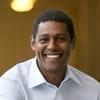Explore all the information on
Dairy cattle - Management practices
Welcome to the page about Dairy cattle - Management practices of Engormix; a source of knowledge on Dairy cattle - Management practices.
Introduction Despite many advances in our knowledge of calf management, the dairy industry continues to be challenged with finding ways to raise replacement dairy heifer calves in such a manner that not only optimizes health, growth, and efficiency, but also is best for their welfare. This paper will identify some of those welfare challenges and how we can use knowledge of replacement dairy calf behavior to identify housing and feeding programs that optimize growth, health, and...
Comments : 3
Recommendations: 2
The aim was to identify the best of four shade systems based on the physiological and productive responses of Bos taurus bulls in a subtropical climate. A total of 804 bulls from Bos taurus, Bos indicus, and their crosses were randomly allotted to 12 pens (n=67 bulls/pen), which were randomly assigned to one of four treatments (3 pens/treatment): (1) Conventional shade (CSS), (2) double shade (DSH), (3) dome without fans (DNF), and (4) dome with fans (DWF). Five Bos taurus bulls per pen were...
Comments : 0
Recommendations: 0
There is no question that the ongoing narrative concerning climate change and various “man-induced” gas emissions (including ammonia, carbon dioxide, methane and nitrous oxide) includes dairy production. While many producers (and others involved in agriculture) may not agree with the significance or level of gas contributions of agriculture to the total production, that disagreement may be somewhat irrelevant. The discussion, social media uproar, political activism and...
Comments : 3
Recommendations: 1
Compensatory growth (CG) is the accelerated gain observed when cattle that have experienced a period of feed restriction are returned to an adequate plane of nutrition. This response, well documented in ruminant production systems, is reinforced by a series of metabolic, hormonal, and tissue-level adjustments that allow animals to recover lost growth potential partially or fully. During restriction, animals reduce basal metabolic rate and shrink energetically demanding organs such as...
Comments : 0
Recommendations: 0
A relatively long heat wave swept through Israel and the Middle East region in mid-August 2025. As expected, reports were received from various regions of the country of a significant decrease in milk yield per cow. A previous review published on the association's website characterized the decrease in milk production following the heat wave. The purpose of the current article is to examine the effect of the increase in cows' heat load during the heat wave period and after it ended,...
Comments : 0
Recommendations: 1
I opened my own farm last year in North India. I have a herd of 150 HF cows and I bought all the cows in advanced pregnancy stages. I had good results in calving and milk. Then we started the AI of them as per the normal practice i.e. as per the visible heat and also used synchronization using protocols based on receptals. Now I have 10 cows which are not getting pregnant and are almost at the point of being dry. So neither I can sell them (nobody would buy them)...
Comments : 21
Recommendations: 0
Pneumonia of calves is a respiratory disease caused by the entry of bacteria and respiratory viruses into the body of calves, which occurs at the age of two to five months, and is more common in closed places and in the winter season. The best prevention of this pneumonia disease in calves is to give colostrum to calves. ...
Comments : 3
Recommendations: 0
INTRODUCTION Raising healthy calves is the foundation for a sustainable and profitable dairy herd. Dam nutrition during the last trimester, calving supervision/assistance, maternity facilities hygiene, umbilical care of calves, colostrum management, and calf nutrition are important factors that impact calf development and health (Lorenz et al., 2011). Calf mortality of 5% or less has been suggested as target for calfrearing operations (Lanuza, 2006). In Chile, however, there is...
Comments : 1
Recommendations: 0
Dr. Albert DeVries, University of Florida, shared key insights on economic decision-making in beef-on-dairy systems during the 2025 Florida Ruminant Nutrition Symposium. ...
Comments : 0
Recommendations: 0
1. Introduction Goat production in Chile is carried out by poor small-scale farmers in semi-arid to arid agricultural conditions [1]. Milk and cheese are the main products obtained using artisanal, cultural and traditionally preserved methods where women and children are usually in charge of production [2]. The products are directly consumed by the family or sold to by-passers at good prices [3]. These production systems are similar in goat production around the world,...
Comments : 1
Recommendations: 1
Global warming and the constant increase in cow’s milk yield exacerbate the summer problem in dairy farms and increase the production loss caused to milk producers. In order to quantify these losses, I collected data from five large scale high yielding dairy farms (1,500 to 3,000 cows per herd), located in the Torreon region, north Mexico, characterized by a desert climate, with close to 180 stressful days, where cows are exposed to heat stress conditions. Despite the desire to compare...
Comments : 4
Recommendations: 2
The negative effects of heat stress and ways to deal with them are currently among the most important research areas. The reason for this is clear, heat stress has become the greatest cause of economic losses to dairy herds, including in regions with a relatively temperate climate, which have only begun to feel the problem in recent years. Evidence of the importance of the issue can be found in the following figure, taken from a recently published article and reviewing the sharp...
Comments : 2
Recommendations: 1
Zonneveld Dairies, Inc., a 10,000-cow dairy operation in California, provides valuable insights from their experience navigating HPAI
At the forefront of the dairy industry, Jacob Zonneveld, president and CEO of Zonneveld Dairies, Inc., boldly navigates challenges as he openly shares his experiences with Highly Pathogenic Avian Influenza (HPAI). With a sprawling operation of 10,000 cows and an equivalent number of replacement heifers spread...
Comments : 0
Recommendations: 0
INTRODUCTION Early detection of mastitis is considered to be the best method to allow the cows the best chance for prompt recovery. Most farms base mastitis detection on visualization of clinical signs such as swollen quarters or altered milk. However, on large farms that have hired workers for milking it may prove challenging to have good mastitis detection. Therefore, new technologies are being constantly tested to automatically detect mastitis in the milking...
Comments : 1
Recommendations: 0
Introduction The dairy industry continues to provide a nutritious food source to our growing global population. Throughout history this industry has undergone significant evolutions contributing to a “more sustainable” product. But what does sustainability really mean, and in animal agriculture, why do we care? According to the U.S. National Environmental Policy Act (NEPA) of 1969 sustainability is to “create and maintain conditions, under which humans and nature...
Comments : 0
Recommendations: 0
Introduction The global agricultural sector, including associated land-use changes, was responsible for emitting 10.6 gigatons (Gt) of carbon dioxide equivalent (CO 2 e), contributing considerably to the overall 53 Gt CO 2 e of global greenhouse gas (GHG) emissions (FAO, 2023). In the United States, the agriculture sector contributed 0.59 Gt CO 2 e in 2022, representing 9.36% of the nation's GHG emissions. This marked a 7.7% increase from 1990 levels...
Comments : 3
Recommendations: 0
Lecture given as part of bpt (German National Veterinarians Association) meeting 2024, held as part Euro Tier exhibition, Hannover, Germany. Israel is a small country located in the eastern basin of the Mediterranean Sea. The territory of Israel is 22 thousand square kilometers (Germany is 16 times larger than Israel). Almost two thirds of Israel’s territory is desert and only 20% of it is used for agriculture. Israel population is approximately...
Comments : 1
Recommendations: 1
Heat stress (HS) has detrimental effects during all stages of dairy cattle life. Cows that experience HS reduce dry matter intake, milk yield, and its composition. In addition, HS has major effects on a cow's health and fertility and negatively impacts a cow's welfare. The decrease in the efficiency of milk production in such conditions increases the negative contribution of the world dairy sector to the environment and brings large economic losses to dairy farmers and the entire...
Comments : 0
Recommendations: 0
I decided to write this article following a concrete case, in which I was asked to give an opinion regarding the purchase of fans to cool the cows along the feed line of a certain dairy farm. This manager was 240 meters long and was used to feed (and cool) 320 cows. The dairy owner had two proposals for fans to be installed in the feeding area. The first fan was 50″ in diameter with a 1.5 hp motor and belt drive, with a power consumption of 1.1 kWh. In order to achieve the...
Comments : 0
Recommendations: 1
Lecture given as part of bpt (German National Veterinarians Association) meeting 2024, held as part Euro Tier exhibition, Hannover, Germany. The principal factors affecting world dairy sectors in summer are climate change (global warming) and the Increase cow’s productivity. The high yielding cow generates more than 2000 W of heat (like 25 persons), which is much above her capability to dissipate, in a typical summer day. The cow in Germany will...
Comments : 0
Recommendations: 2










.jpg&w=3840&q=75)


.jpg&w=3840&q=75)








